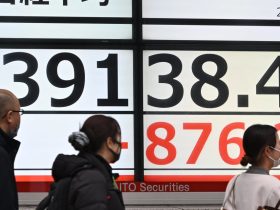This bear market has made up for its relatively shallow depth with its historic duration. The S&P 500 reached a high of 4,818 in December, 2021 before plunging to 3,602 in September 2022—a decline of approximately 25%, certainly sizable but nothing compared to the 50% declines after the 2000 dotcom collapse or the 2008 financial crisis. It then climbed in July to 4,615, just 4% below the 2021 high. Some declared the bear market over. But like so many scourges of the past several years (viruses, demagogues, and environmental chaos), this one has proven enduring. The S&P plunged back down to 4,288, still 11% below its original high.
Very few bear markets take longer than 20 months to break even. Aside from the colossal bear markets mentioned above, and the 1973–1974 bear market (which took 46 months), most bears revert to their original highs within a year or two. Especially when a bear market does not inflict losses of more than 30%, the recovery is relatively rapid. The only outlier in the post-WWII period (besides now) is 1946–1949, where the market lost 26% and took more than 3 years to recover. In fact, the 1946 bear market is looking like the closest analogue to the present—especially as it, too, occurred against a backdrop of formidable inflation. Of course, as Mark Twain said, history doesn’t repeat, it only rhymes. So while past markets can provide valuable context, they are not worth much more than tea leaves as far as decision making.
The big bright spot this year has been the Japanese market, where stocks look to have entered into what looks like a very powerful bull market. The DXJ (WisdomTree Japan Hedged Equity ETF) is up 33% year-to-date, and up 23% annualized over the past 3 years. It has been important to hedge against yen losses via the DXJ
DXJ
Many were surprised at the gains in Japan given the macro-malaise that had shrouded Japanese stocks for so long. But such stocks were dirt cheap, trading at less than book value, and ripe for any positive changes. Expectations were so poor and psychology so wounded that just the recent end of deflation was enough to make Japanese stocks take off.
The gains are likely to continue, as Japanese stocks remain cheap (even after the recent run-up) and shareholder-friendly policies gradually take hold. As the Wall Street Journal points out, Japanese stock exchanges have been exerting pressure on publicly traded companies to reverse their malaise through share buybacks and dividend payouts. Though Japanese companies remain poorly managed relative to U.S.-based companies, any improvement in capital allocation could deliver huge improvements in share prices.
Disclosure: James Berman owns the DXJ in both client accounts and in his own accounts.
Read the full article here













Leave a Reply